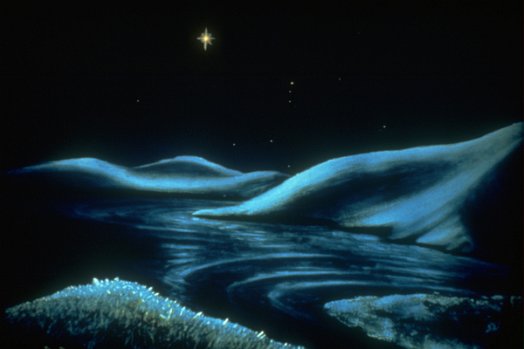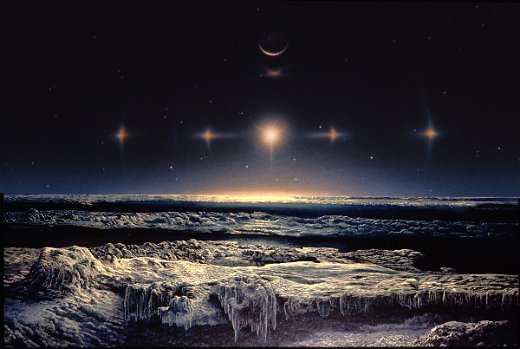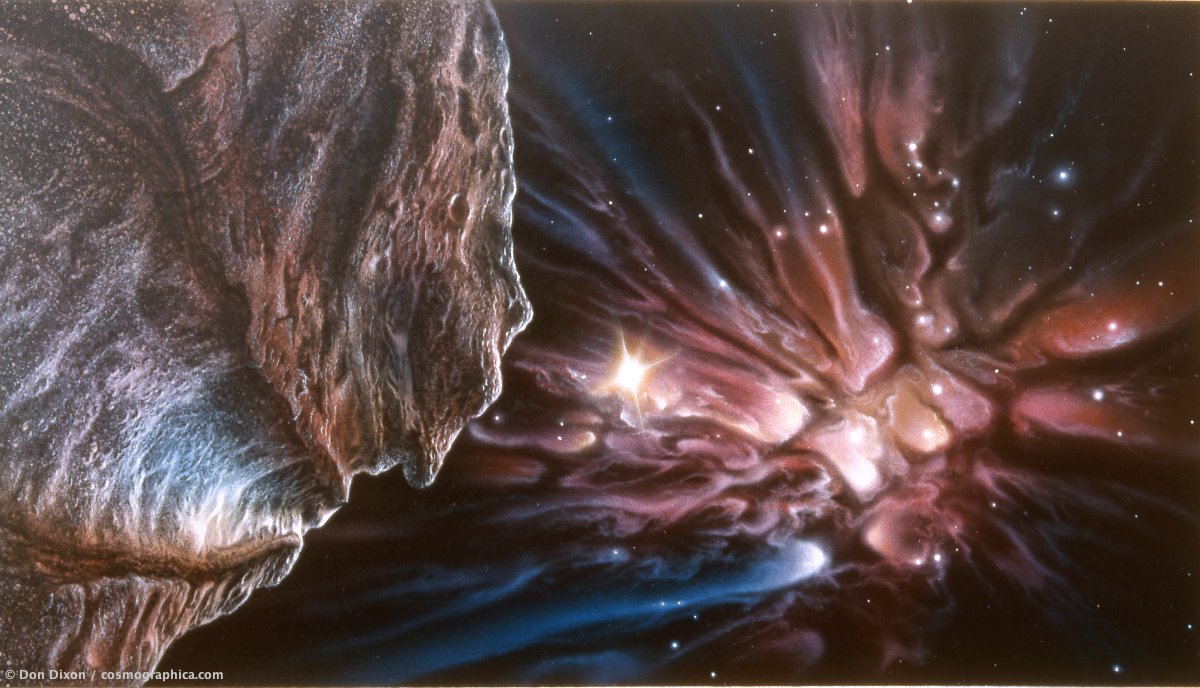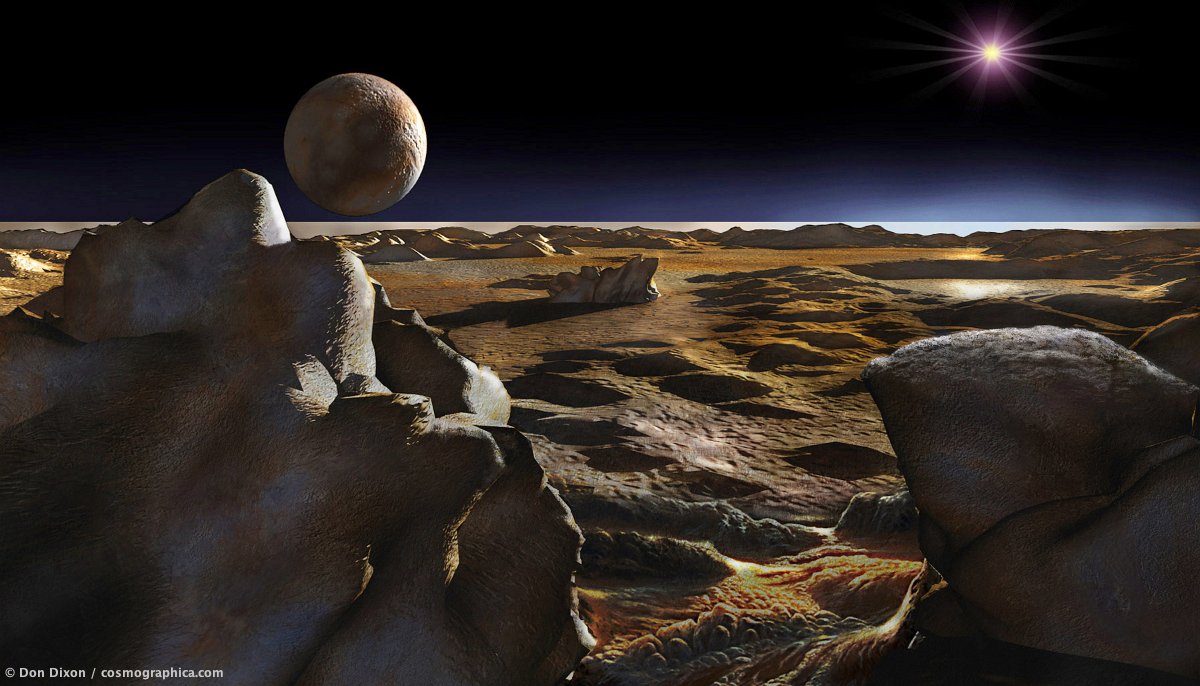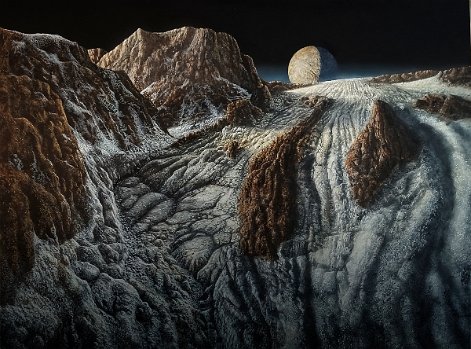
Pluto and Charon
Pluto and Charon – A remarkably prescient rendering of Pluto and its moon Charon, which form a double planet at the frontier of the solar system, cover for Out of the Darkness, by Clyde Tombaugh, discoverer of Pluto ; acrylic and gouache on illustration board, 1979, © Don Dixon
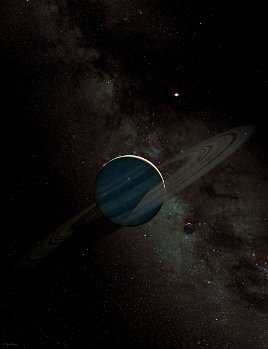
Hypothetical Planet X
A hypothetical planet in the outer reaches of the solar system orbits more than 700 times farther from the sun than earth does. A super-Earth, with an estimated mass of 10 Earths (approximately 5,000 times the mass of Pluto), a diameter two to four times that of Earth, and a highly elliptical orbit with an orbital period of approximately 15,000 years, the planet is shown as a ringed ice giant whose night side is illuminated by lightning and aurorae powered by galactic cosmic rays. digital painting, copyright Don Dixon, 2016
